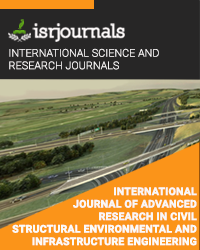conversion of plastic into bio-oil by pyrolysis catalyst method
KEERTHIVASAN.R,K. Sharan Kumar, S. Madhana Gopal,V. Madhavan,M. Lakshmana Prasad
Published in International Journal of Advanced Research in Civil,Structural,Environmental and Infrastructure Engineering and Developing
ISSN: 2320-723X Impact Factor:1.7 Volume:3 Issue:1 Year: 18 March,2020 Pages:553-559

Abstract
Catalytic pyrolysis of waste plastics using low cost binder-free pelletized bentonite clay has been investigated to yield pyrolysis oils as drop-in replacements for commercial liquid fuels such as diesel and gasohol 91. Pyrolysis of four waste plastics, polystyrene, polypropylene, low density polyethylene and high-density polyethylene, was achieved at a bench scale (1 kg per batch) to produce useful fuel products. Importantly, the addition of binder-free bentonite clay pellets successfully yielded liquid based fuels with increased calorific values and lower viscosity for all plastic wastes. This larger scale pyrolysis study demonstrated that use of a catalyst in powder form can lead to significant pressure drops in the catalyst column, thus slowing the process (more than 1 hour). Importantly, the use of catalyst pellets eliminated the pressure drop and reduced pyrolysis processing time to only 10 minutes for 1 kg of plastic waste. The pyrolysis oil composition from polystyrene consists of 95% aromatic hydrocarbons, while in contrast, those from polypropylene, low density polyethylene and high density polyethylene, were dominated by aliphatic hydrocarbons, as confirmed by GC-MS. FTIR analysis demonstrated that low density polyethylene and high density polyethylene oils had functional groups that were consistent with those of commercial diesel (96% similarity match). In contrast, pyrolysis-oils from polystyrene demonstrated chemical and physical properties similar to those of gasohol 91. In both cases no wax formation was observed when using the bentonite clay pellets as a catalyst in the pyrolysis process, which was attributed to the high acidity of the bentonite catalyst (low SiO2 : Al2O3 ratio), thus making it more active in cracking waxes compared to the less acidic heterogeneous catalysts reported in the literature. Pyrolysis-oil from the catalytic treatment of polystyrene resulted in greater engine power, comparable engine temperature, and lower carbon monoxide (CO) and carbon dioxide (CO2) emissions, as compared to those of uncatalyzed oils and commercial fuel in a gasoline engine. Pyrolysis-oils from all other polymers demonstrated comparable performance to diesel in engine power tests. The application of inexpensive and widely available bentonite clay in pyrolysis could significantly aid in repurposing plastic wastes
Kewords
Key words: catalytic conversion, catalyst, waste plastic, bentonite clay.
Reference
REFERENCE: IS code: ▪ Testing methods for fuel properties measurement &Physical parameters study. ▪ IS-1448-P16 for Density. ▪ IS-1448 P-32 for Specific gravity. ▪ IS-1448-P25 for Kinematic viscosity. ▪ IP-36 for flash point and fire point. ▪ IP-16 for pour point. ▪ Gross calorific value was determined as per IS-1448. ▪ P. Premkumar1, C.G. Saravanan1, M. Gopalakrishnan, department of chemistry, Conversion of hospital low density polyethylene waste into hydrocarbons using fly ash as catalyst. ▪ Supattra Budsaereechai, Andrew J. Hunt and Yuvarat Ngernyen, department of chemistry, Catalytic pyrolysis of plastic waste for the production of liquid fuels for engines. ▪ S D A Sharuddin, F Abnisa1, W.M.A.W. Daud and M K Aroua Department of Chemical Engineering, pyrolysis of plastic waste for liquid fuel production as prospective energy resource. ▪ Anke Brems, Raf Dewil1, Jan Baeyens, Rui Zhang, Gasification of plastic waste as waste-to- energy or waste-to-syngas recovery route. ▪ M. Z. H. Khan, M. Sultana, M. R. Al-Mamun, and M. R. Hasan, Pyrolytic Waste Plastic Oil and Its Diesel Blend, Fuel Characterization ▪ Christine Cleetus, Shijo Thomas, and Soney Varghese, A petroleum-based fuel has been produced from waste plastic (polythene). ▪ Achyut K. Panda ,International Journal of Industrial Chemistry ,Thermo-catalytic degradation of different plastics to drop in liquid fuel using calcium bentonite catalyst. ▪ Sankar Bhattacharya, Department of Mechanical Engineering, Waste not, want not, a home-grown plan to turn plastic and tyres into fuel

